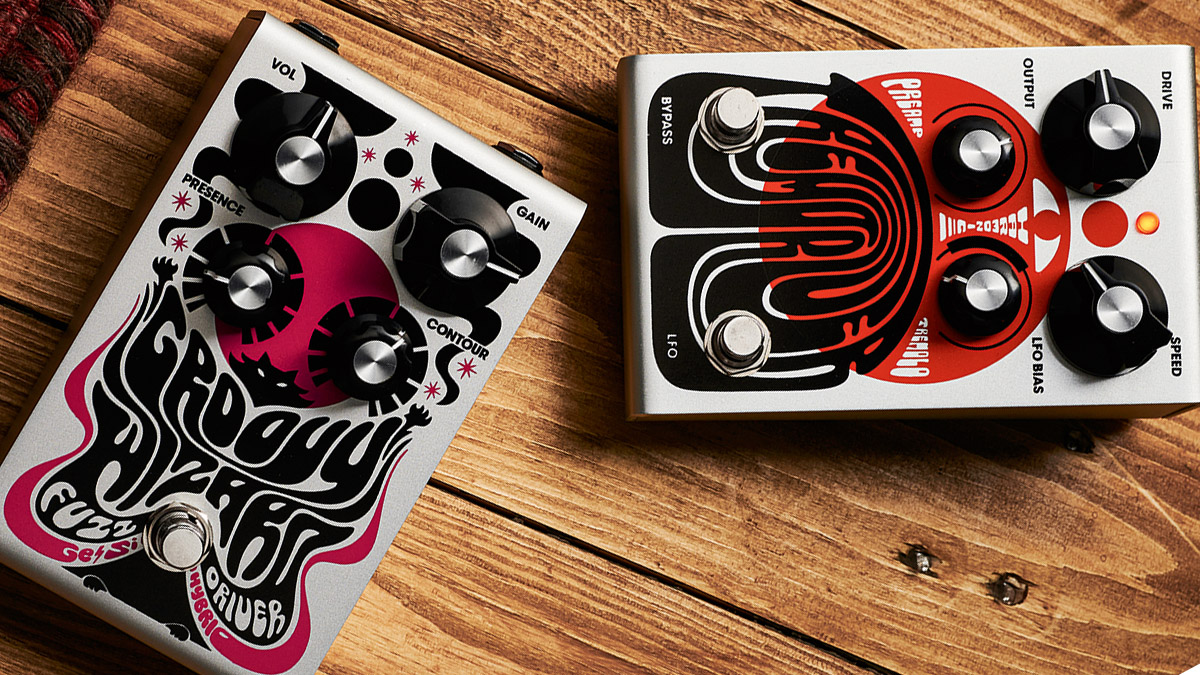Guitar World Verdict
It’s great to see a new pedal company emerge with such a commendable ethos and attention to detail – and come up with a brace of pedals that deserve a place on the classiest of ’boards.
Pros
- +
Excellent build quality.
- +
Ergonomic wedge-shaped design.
- +
Versatility of function.
- +
Sound quality.
Cons
- -
Expensive.
- -
Some may miss having an LED, but adding an LED to fuzz circuits could negatively affect dynamics, touch-sensitivity and tone.
You can trust Guitar World
If former Catalinbread pedal designer Howard Gee’s cat hadn’t walked past his Strat just as he was trying to think up a name, this pedal company may never have been called Kittycaster! These hand-built pedals have a distinctive look to match, too, with a pretty damn solid wedge-shaped, two-part sheet aluminium chassis and psychedelic-style graphics.
All of the connections are on the front, so the pedals sit snugly side by side. With that sloping surface a whole array of them would look really good, but we may have to wait a while for more models to be added to the range.
The pedals sit on four rubber feet that can be easily undone with your fingers to get the two chassis sections apart and that can be replaced with the supplied countersunk screws for a flush base if you want to add them to your ’board using Velcro.
Tremdriver Preamp/Harmonic Tremolo
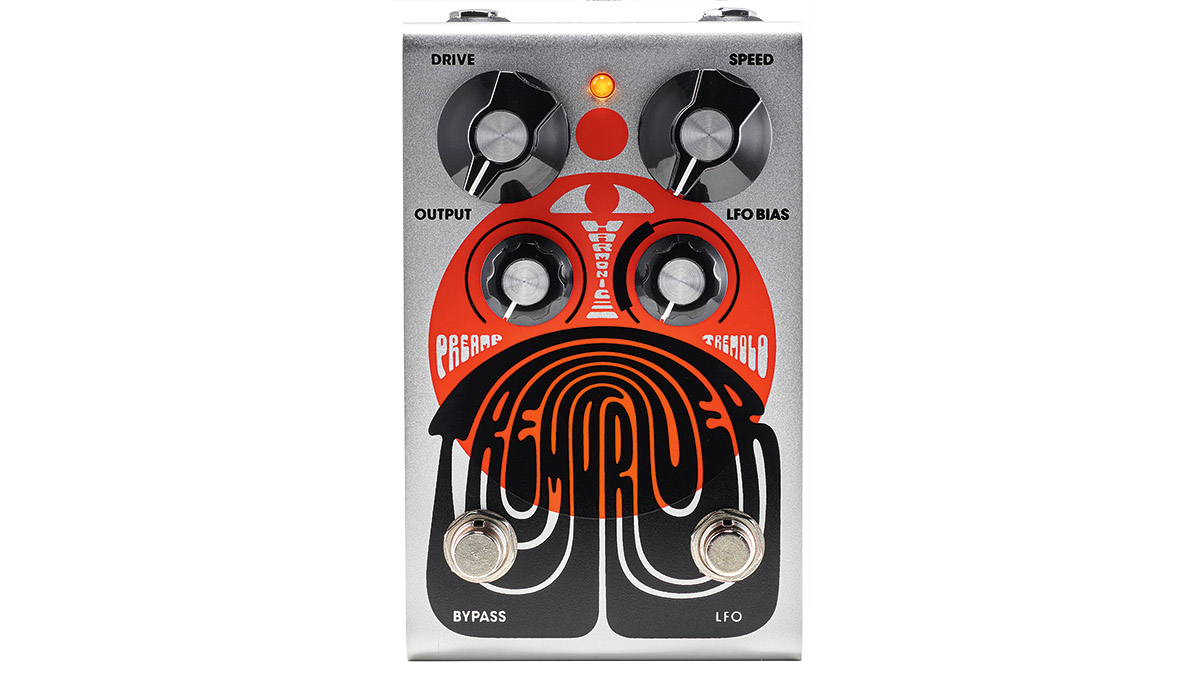
The intent of the Tremdriver preamp is to make everything sound bigger, wider and punchier. Basically, it’s a high-headroom preamp that runs from a standard nine-volt supply but internally converts it to 24 volts.
If you’re familiar with the properties of the EP-3 Echoplex preamp, this is it writ large: where the EP-3 featured a single preamp JFET stage, here you get three discrete JFET preamp stages in a series/parallel configuration.
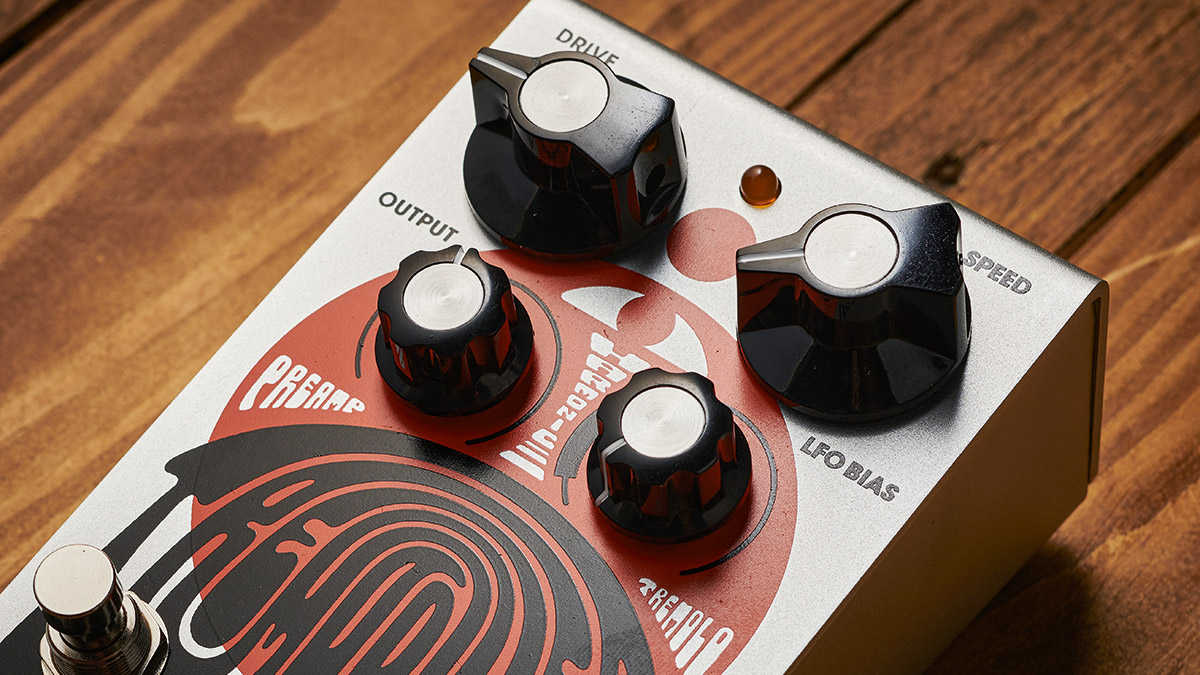
Your guitar signal hits the single first stage and then the Drive control splits out the signal to two parallel JFET preamp stages that are voiced treble and bass. Besides the preamp you also get harmonic tremolo from the pedal, kicked in with the LFO footswitch. When this is engaged the signal starts panning between the treble and bass JFET stages to give you harmonic tremolo sound.
When engaged, the preamp has an immediate positive effect on your tone – everything seems somehow bigger and better – and it’s especially adept at fattening up single coils. There’s more, though, as there’s plenty of boost to be had by turning up the Output and Drive knobs, the juxtapositioning of the two offering variations on the crunch engendered at any chosen volume level.
All the latest guitar news, interviews, lessons, reviews, deals and more, direct to your inbox!
The recommended position for this pedal in your signal chain is near the end (but before reverb and delay) to give everything that’s come before a hefty dose of tone conditioning, and for it to act like the master fader for the whole pedalboard.
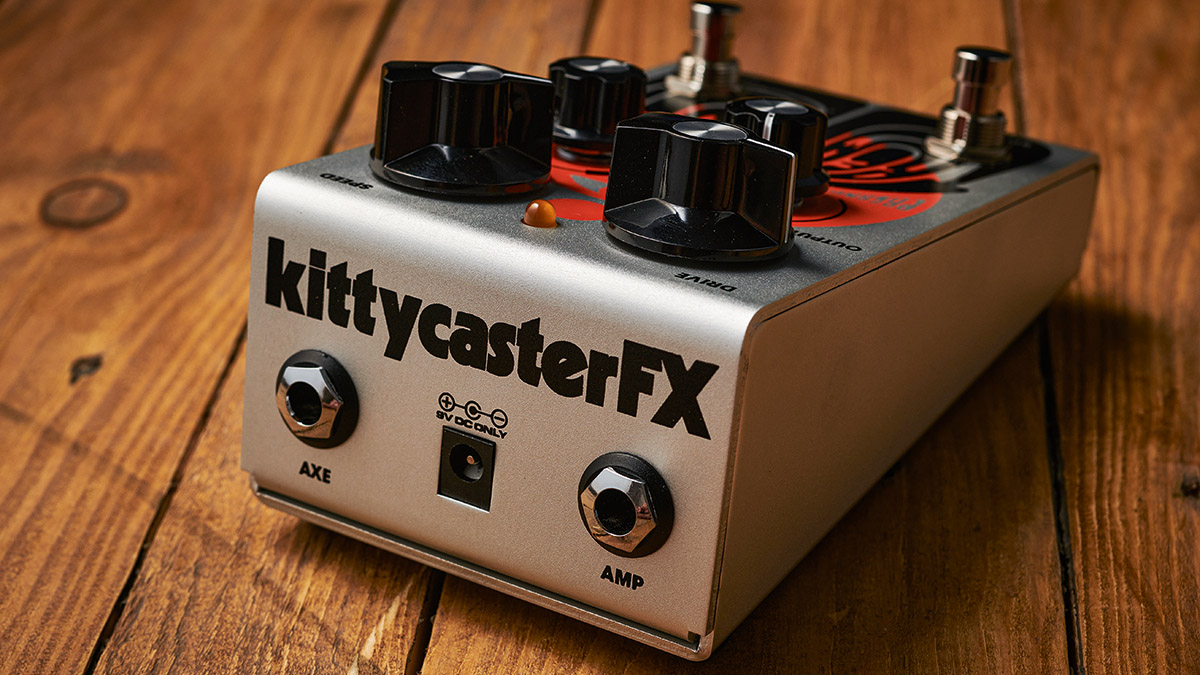
In that role it’s really one of those always-on tonebuilders, and the tremolo, of course, can be switched in and out at will. Alternatively, you can use it to kick in for an instant shift upwards if you want something to push your amp for solos or extra emphasis, but remember that the trem only works if the preamp is active.
As for that trem, it’s really versatile and sounds great. You have a large knob to control the speed from a slow pulse to a very fast warble, but the nature of the sound is determined by the LFO Bias knob, which works its magic on the waveform.
The LFO circuit here has a vintage connection in that it was derived from that found in a Uni-Vibe, evident in the shallow rounded throb of the lower settings of the knob. As you turn the Bias up the waveform moves on from the softer edged pulse, getting progressively sharper for a choppier sound and tremolo of the on/off nature.
Groovy Wizard Fuzz Driver
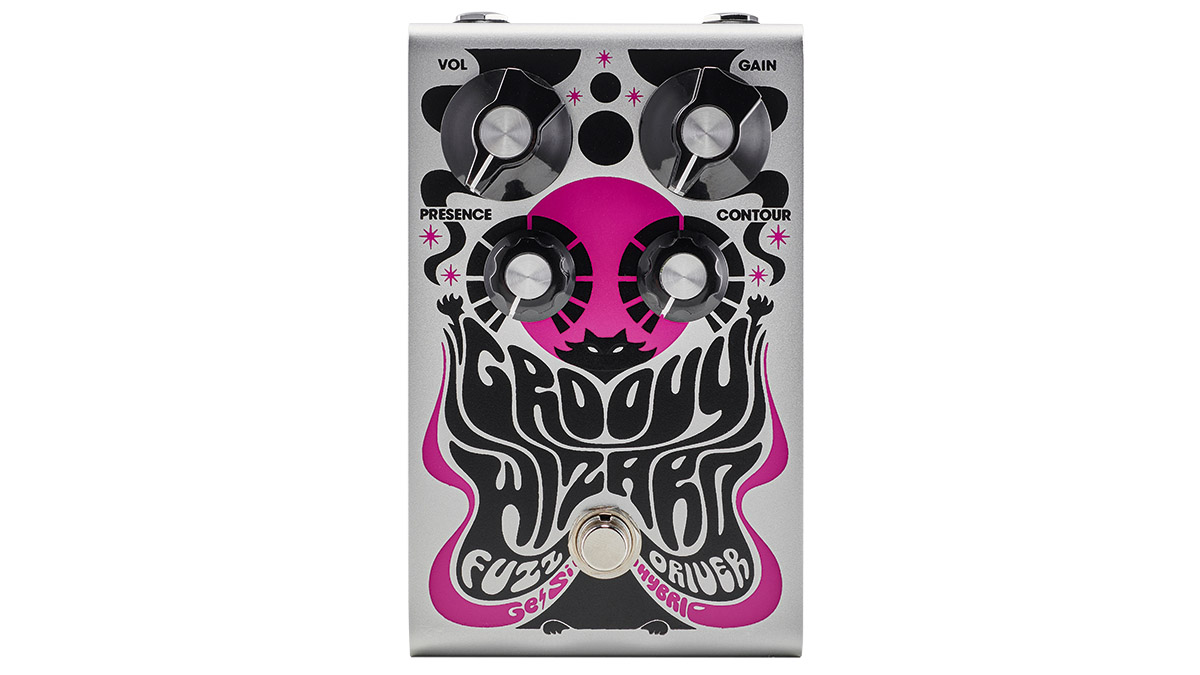
The Groovy Wizard Fuzz Driver is a two-transistor fuzz pedal that utilises both germanium and silicon transistors. The design brief was to go beyond the type of fuzzes that have just one setting that works and create a pedal where each control has a full range of usefulness throughout the rotation of the knob.
There is remarkable touch-sensitivity as the pedal responds brilliantly to picking dynamics, allowing you to be expressive in your playing
Furthermore, the pedal had to overcome a range of common fuzz pedal problems: it had to work with a wah or buffer in front, and work equally well with single coils and humbuckers plus a variety of amps, allowing the character of the guitar to come through. All of those boxes have been ticked.
Designed to take advantage of higher voltage levels to increase headroom and dynamics, the pedal has 18-volt operation either from your own power supply or two nine-volt batteries, if you prefer batteries in a fuzz. It also works fine on a standard nine-volt supply; Howard Gee says anything from five volts up to 18 will do. Our preference was for the full 18-volt headroom, but you can creatively use lower voltages to zero in on a preferred sound with increased saturation.
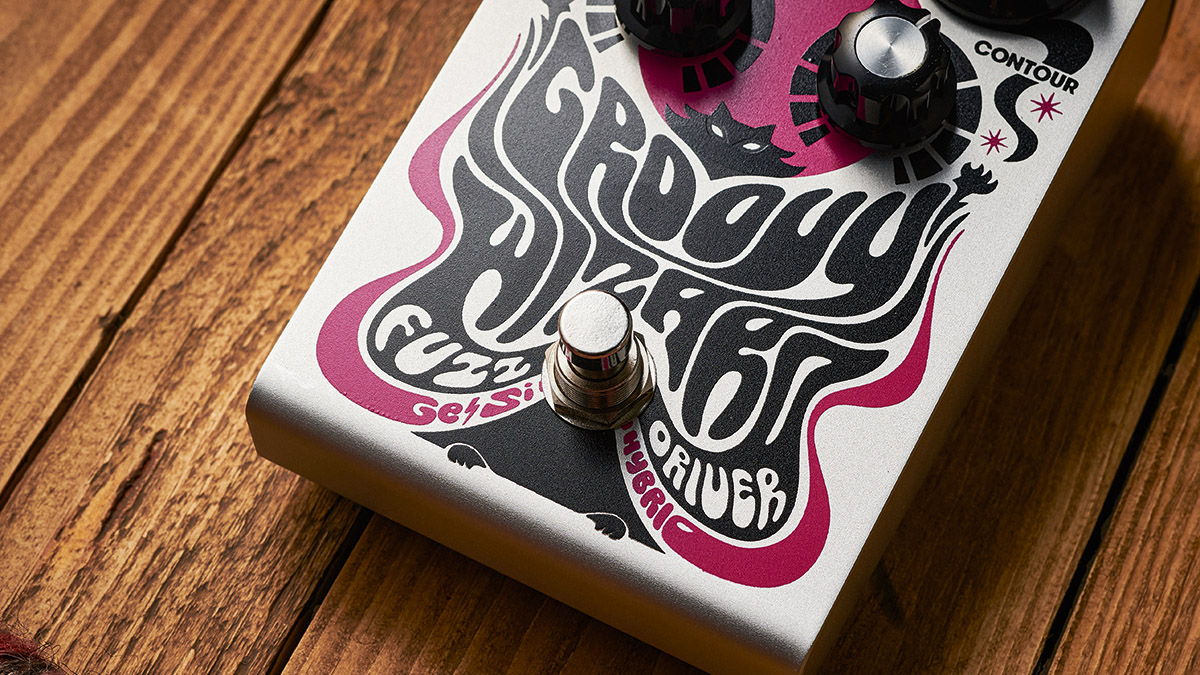
There are the expected Volume and Gain knobs here, but the pedal also adds two tone controls, Presence and Contour, designed to subtly shape the pedal’s response.
The Contour control shapes the low-end before it hits the fuzz circuitry, keeping things tighter or adding girth, while Presence adjusts top-end at the output for adding sparkle and bite, or to best match how things are working with your amp. The range here runs from clean boost territory to crunchy drive with a fuzzy harmonic edge, through to a satisfyingly fat, full-on sustain-y fuzz.
There is remarkable touch-sensitivity as the pedal responds brilliantly to picking dynamics, allowing you to be expressive in your playing – caressing the strings with a softer touch for cleaner sound, digging in to bring out the dirt, and rolling back your volume knob for a very smooth clean-up.
Specs
KittycasterFX Tremdriver Preamp/Harmonic Tremolo
- PRICE: $399
- ORIGIN: USA
- TYPE: Preamp/Harmonic Tremolo pedal
- FEATURES: True bypass
- CONTROLS: Drive, Speed, Output, LFO Bias, LFO footswitch, Bypass footswitch
- CONNECTIONS: Standard input, standard output
- POWER: 9V DC adaptor (not supplied) 70mA
- DIMENSIONS: 86 (w) x 139 (d) x 75mm (h)
KittycasterFX Groovy Wizard Fuzz Driver
- PRICE: $299
- ORIGIN: USA
- TYPE: Fuzz Driver pedal
- FEATURES: True bypass
- CONTROLS: Volume, Gain, Presence, Contour, Bypass footswitch
- CONNECTIONS: Standard input, standard output
- POWER: 9-18V DC adaptor (not supplied) or two 9V batteries, 0.5 to 0.25mA
- DIMENSIONS: 86 (w) x 139 (d) x 75mm (h)
- CONTACT: KittycasterFX
Trevor Curwen has played guitar for several decades – he's also mimed it on the UK's Top of the Pops. Much of his working life, though, has been spent behind the mixing desk, during which time he has built up a solid collection of the guitars, amps and pedals needed to cover just about any studio session. He writes pedal reviews for Guitarist and has contributed to Total Guitar, MusicRadar and Future Music among others.
